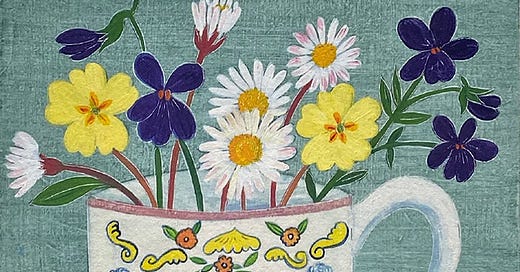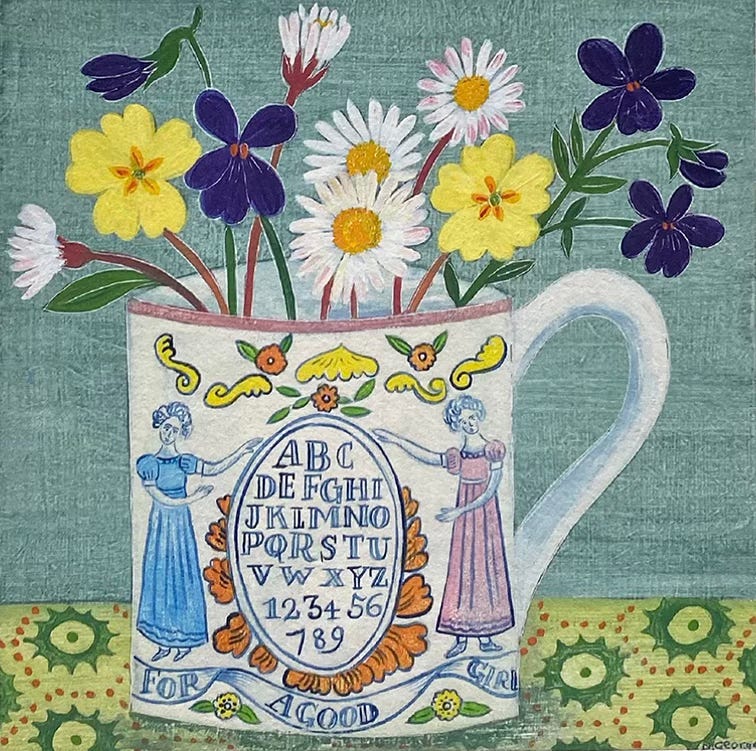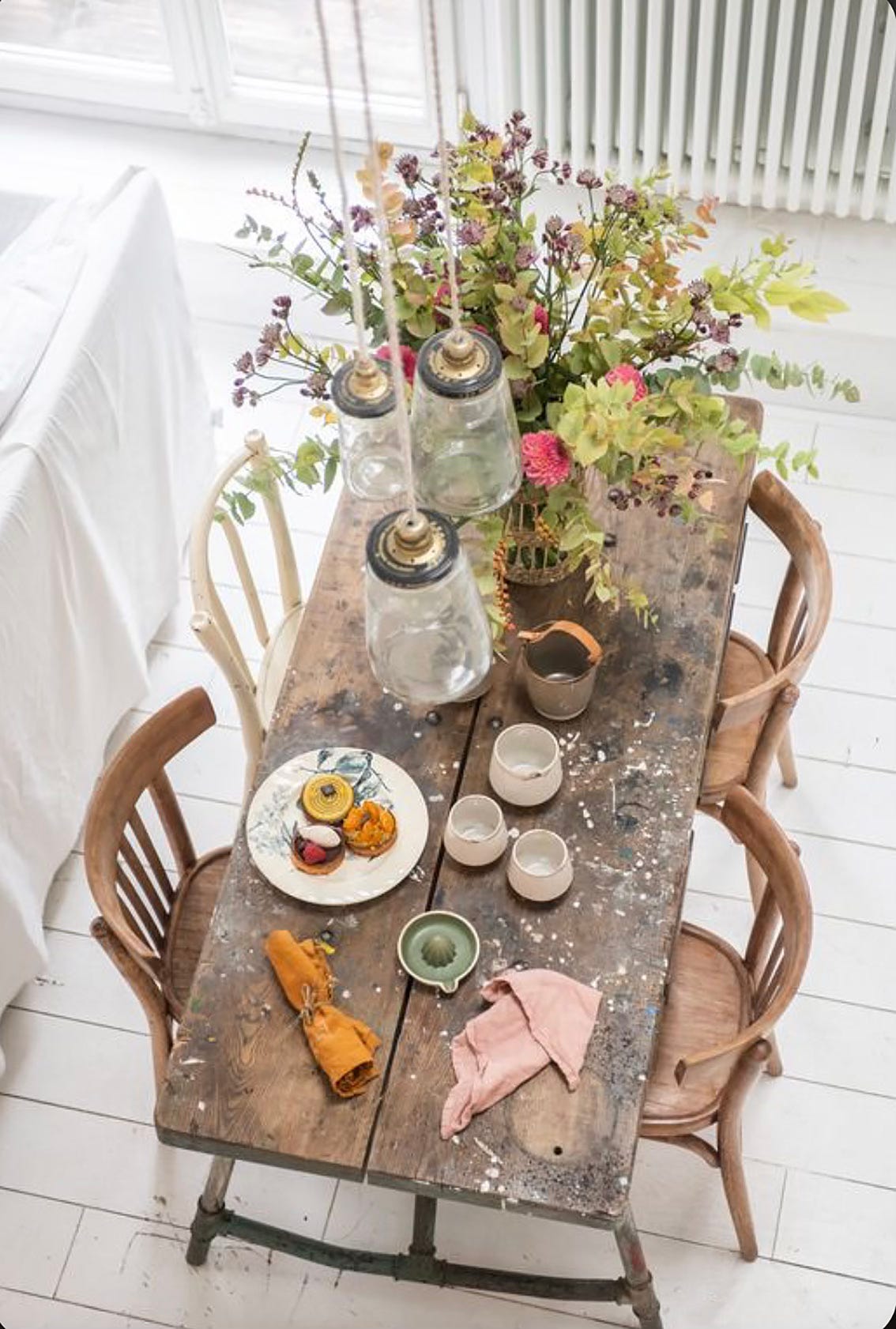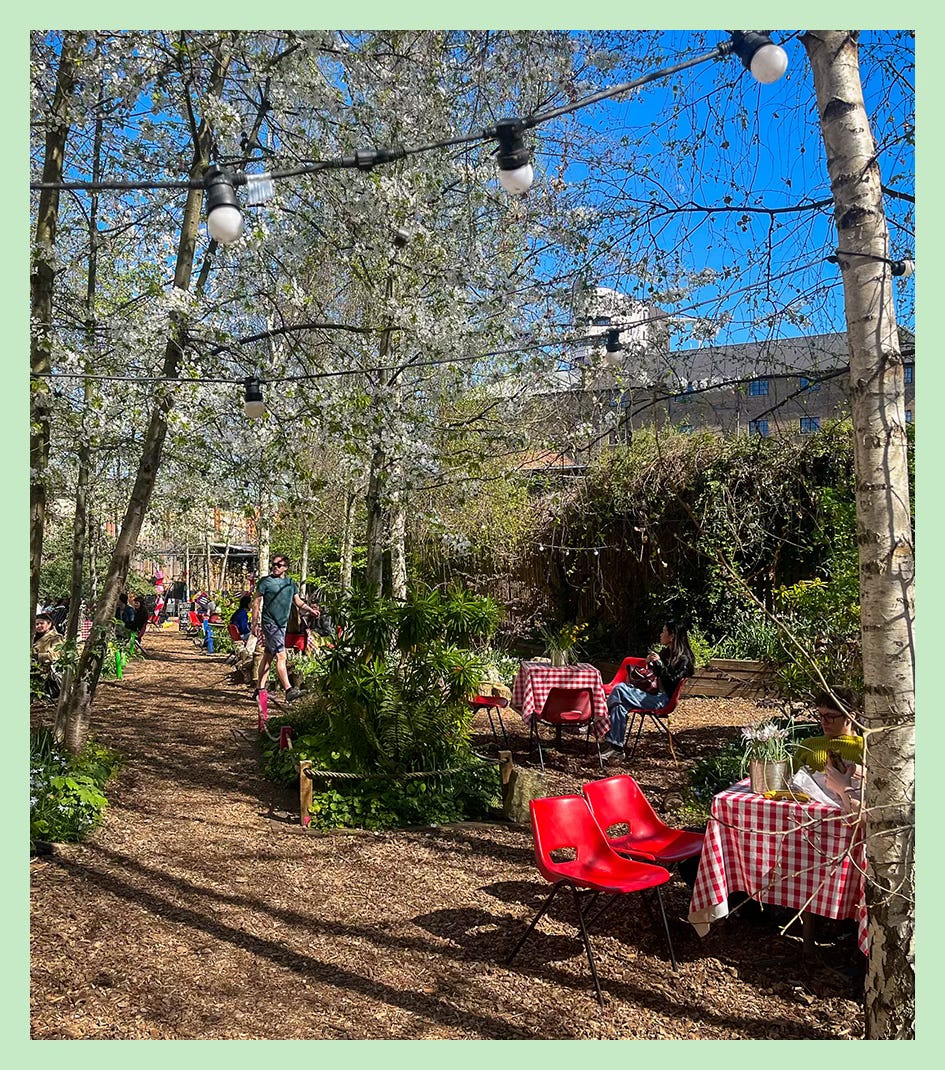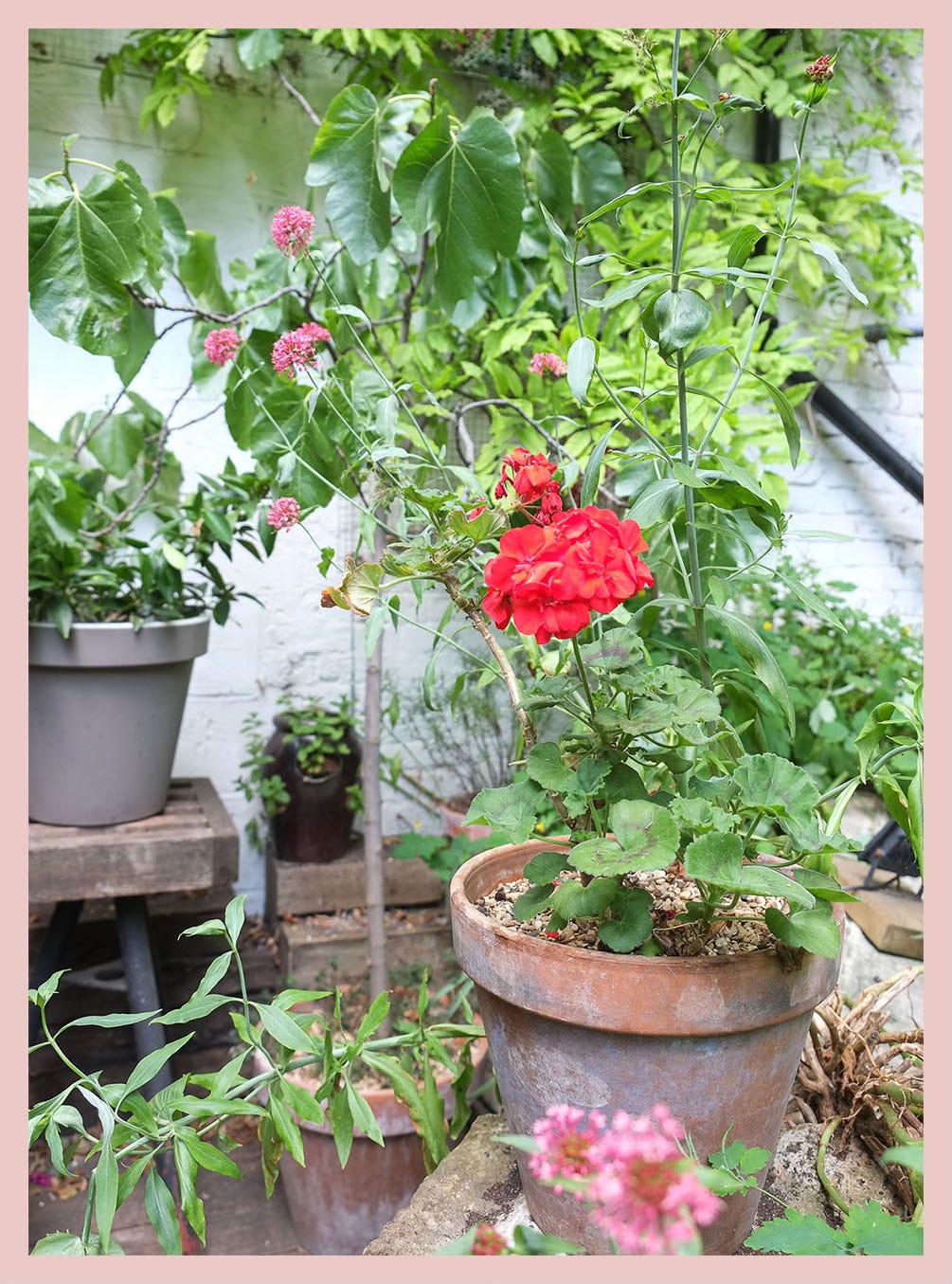The May Edition
Sunny days: A secret garden, flower paintings, al fresco furniture & vintage ceramics
Welcome to Love Vintage Etc. For this week’s post I chatted to Yorkshire based artist Debbie George about her work, which is inspired by flowers and vintage ceramics. And with sunny days ahead I sample a few al fresco cafés and take a closer look at reclaimed garden furniture.
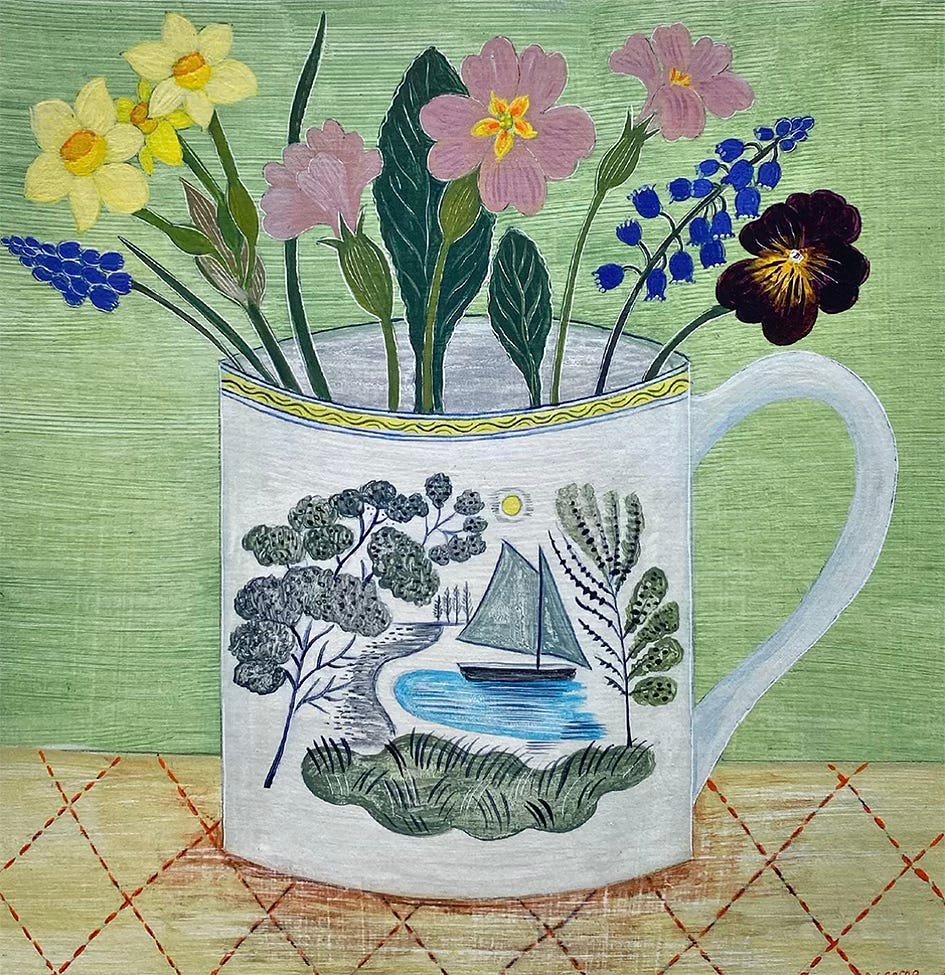
Artist Debbie George’s Instagram account brims with vibrant paintings of flowers paired with antique ceramics or set against rural landscapes. Debbie lives and works in the Yorkshire countryside but is also drawn to the wild coastline of Cornwall and both locations inspire the settings for many of her paintings.

In this exclusive interview I asked Debbie about her collections of vintage and antique ceramics and which flowers she loves to paint.
MM Debbie, can you tell me about your collections of ceramics and why those items resonate with you?
DG I collect many types of pottery and ceramics, my shelves are laden. I particularly like Mochaware, Nurseryware, Transferware, Canaryware, Wedgwood Ravilious and some studio pottery. My absolute favourites are the antique nursery ware pieces, the smaller the better. I love miniature cups and plates and jugs decorated with mottos and alphabets. These tiny pieces appeal to me the most because of the size and delicacy. It is amazing that they have survived for so many years, sometimes hundreds of years.
MM Where do you source your pieces and do you put them out on display?
DG I love hunting for antiques and vintage finds at antique fairs and car boot fairs but I do look at online auctions quite often. I’m much more choosy about the items I buy these days as all the shelves are full. I like to have everything on display, mainly in my painting studio, in a large dresser painted a lovely sunny yellow.
MM Which ceramicists, styles and eras are you most drawn to?
DG My love of ceramics spans many eras: I collect a few pieces from contemporary potters like Judith Row and Lucy Rutter but I tend to lean towards antique and vintage. I’m not fussy about the condition of the old pieces, if they have cracks or damage I always think it adds to the charm of the piece.
MM What are your favourite flowers to paint?
DG I love painting flowers and grow many varieties in my garden which then feature in my paintings. I love spring flowers best of all; if I have to choose just one then the Snowdrop is my all time favourite, closely followed by Auriculas and Forget-me-nots.
MM And finally, can you share any forthcoming exhibitions or projects coming up this year?
DG I have a solo exhibition scheduled for Spring 2026 at the Bircham Gallery in Holt, Norfolk. There will be over 50 new paintings so most of my work this year will be for that show. I will also have a few new paintings in the 40th anniversary exhibition at the Fry Art Gallery, in Saffron Walden, this November.
Garden Furniture & Salvage
My most popular requests for vintage garden furniture are French café tables. These look great teamed with reclaimed folding chairs and have the added benefit of easy storage. Look out for chairs with substantial wooden slats and well-oiled metal frames and folding tables with stable fixtures. Worn patina and paint layers look attractive but you’ll need to maintain the surfaces to prevent further wear. Remove any unwanted rust or very flaky paint with dry wire wool or fine sandpaper and protect with a waterproofing product such as Briwax, on metal, or linseed oil on wood. It’s advisable to store vintage furniture undercover in wet weather when not in use.
Use antique garden planters or salvaged tubs to plant up summer flowers and herbs. These Castelnaudary ceramic pots, shown below with their unique green glaze, originate from the Occitania region in southern France, where they were produced for planting citrus trees and patio plants. For a much cheaper alternative turn large reclaimed terracotta plant pots, galvanised metal tubs, watering cans or paint kettles into planters.
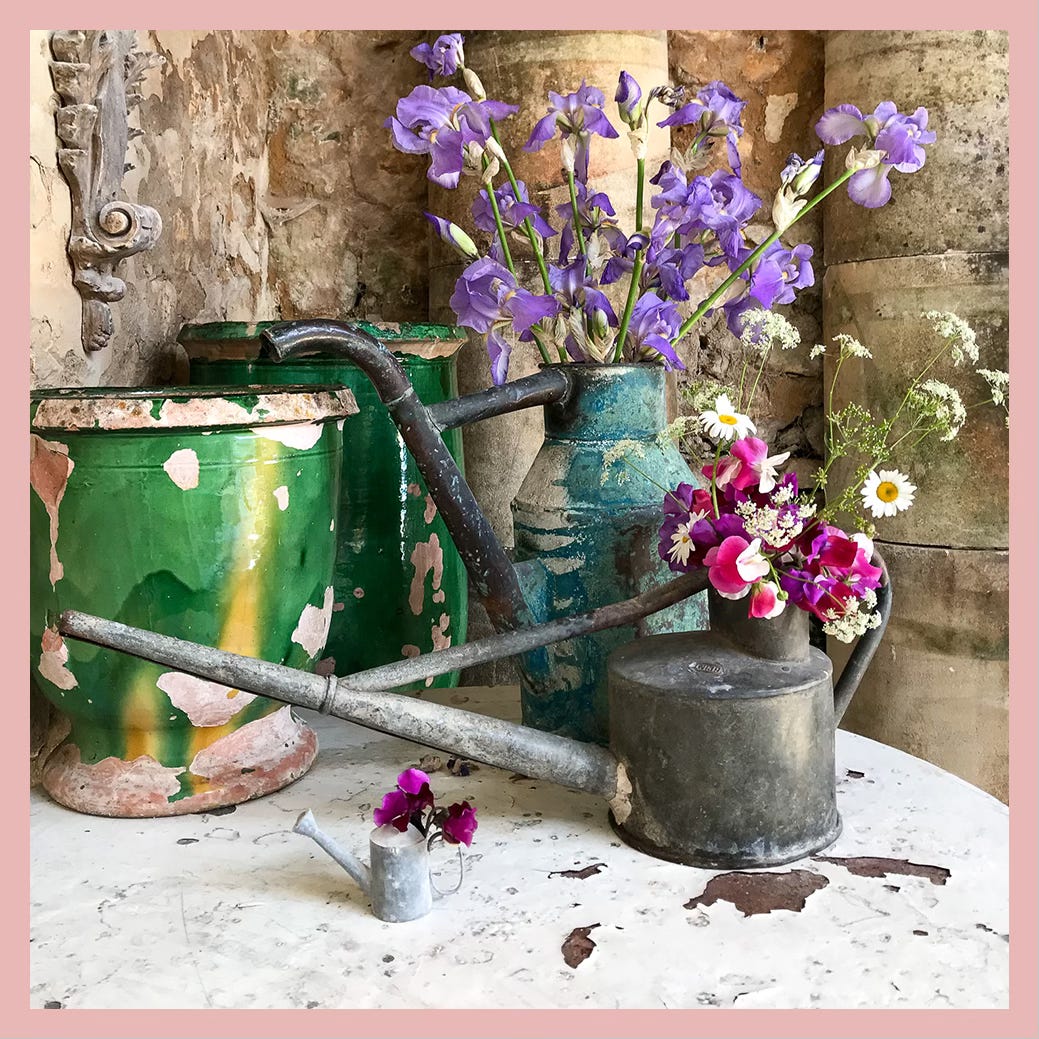
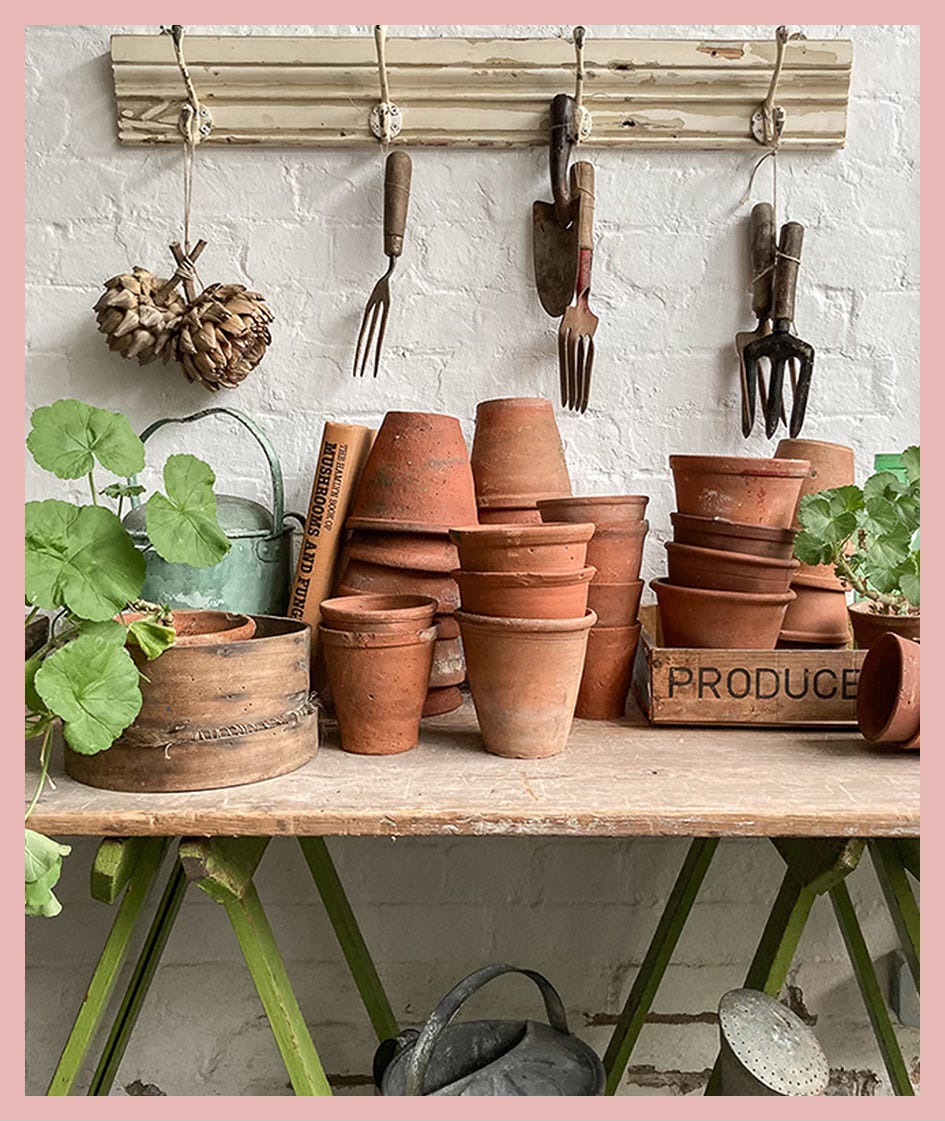
Sourcing vintage furniture for interiors
For me, the best thing about repurposing vintage pieces is the satisfaction in creating a new look out of something discarded. Making my tiny home look good gives me a lot of pleasure and I love stumbling across unique vintage pieces to add to my growing collection. What my flat lacks in size, it makes up for in style and pre-loved ceramics and paintings are my downfall but I only buy what I love and seldom spend more than the item’s worth. The most expensive vintage painting on my wall was less than the cost of a pair of running shoes and I found my four original Tolix dining chairs for £25 each.
Choosing what works for you
A statement piece of furniture needn’t be limited to high-end antique pieces. Consider charity shops, boot sales, flea markets or many of the online vintage platforms for an idea of what’s available - there are plenty of bargains to be had if you’re willing to do the leg work.
Tables, seating and wardrobes / storage are, in my experience, the most popular vintage furniture requests and are frequently chosen as ‘forever pieces’, moved from home to home or purchased to add impact and focus to a newly renovated room.
When considering furniture take into account your available space - measure up first and check for access - will it fit through the front door, or go up flights of stairs? And will the Victorian chaise longue you’ve set your heart on look right with your existing furniture and decoration?
Before making your purchase double check for damage: loose joins, uneven legs, stained surfaces, woodworm or rust and ask the seller for close-up photographs if you’re unable to view the piece in person. For larger items think about the practicalities: how many people do you need to seat around the table or does the dresser have enough storage space?

Myth: you don’t have to live in a period property to enjoy antiques and salvage; classic vintage and pre-loved can look just as good in a new apartment or modern build.
A large refrectory table looks impressive in a rustic farmhouse but could equally look good in a contemporary setting, or new build with a paired back style. And if you live in a period property there’s no reason why midcentury furniture would look out of place if it fits with your style and decoration.
Create a lived in look
Interior designer Olivia Outred creates the kind of interiors that resonate with nostalgia yet her razor-sharp style is refreshingly original with a clever use of reclaimed and vintage to add spark, rather than stuffiness, sometimes associated with antique pieces.
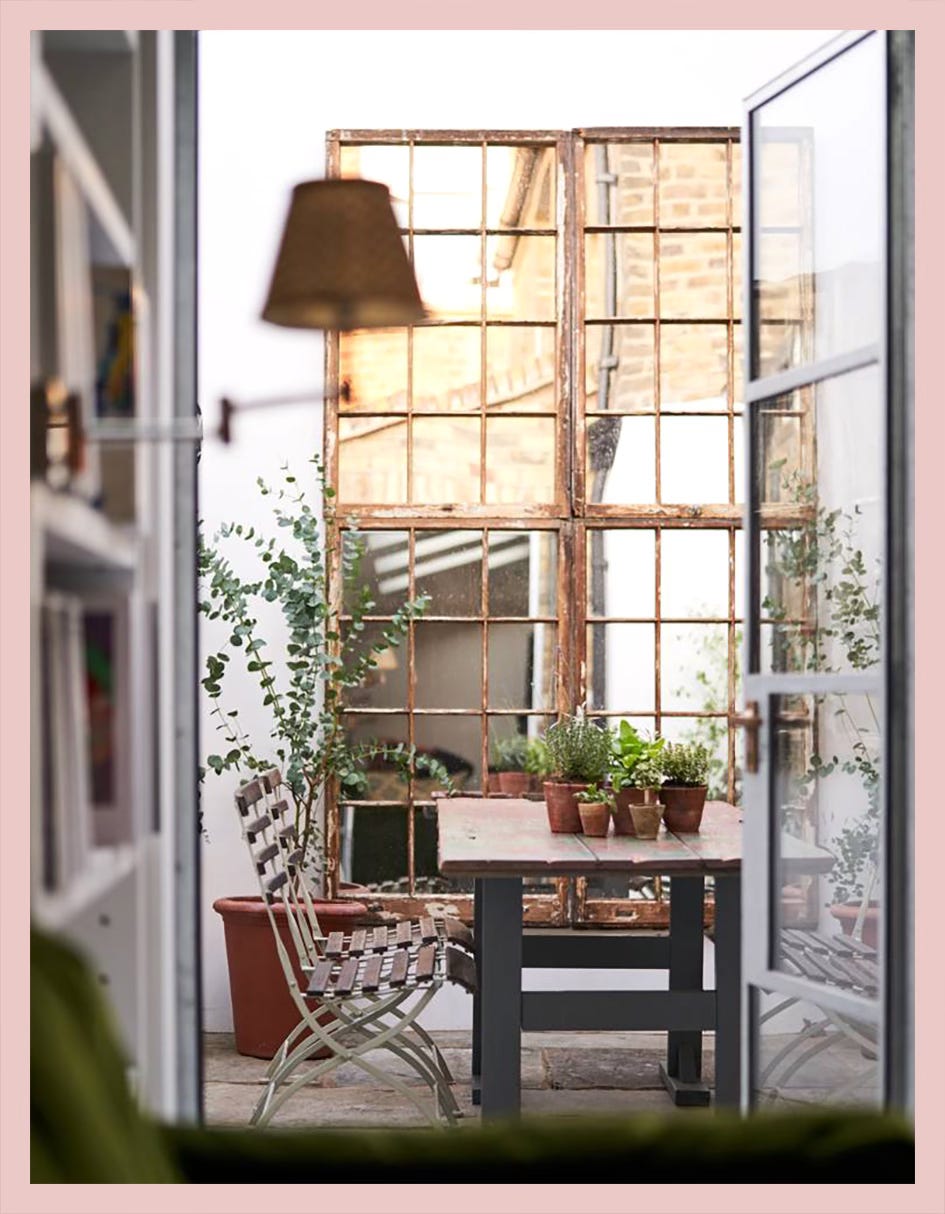
Whether re-configuring an office space for art dealers or a private home in Notting Hill Olivia’s love of antiques and vintage artwork is reflected in every project to give character, texture and depth with an instant lived-in feel.
She says, “We always place a vintage or antique piece in every single room in the house. I think it’s important that rooms and spaces look like they have evolved naturally over time and using antique furniture helps to create a timeless quality too”.
Olivia has a talent for repurposing vintage finds such as the potting shed table above, used as an outdoor dining table. Try teaming with heritage paint colours and vintage fabrics to create seamless backdrops for your vintage furniture and artworks.
Favourite al fresco places
I don’t have a garden so I’m always on the lookout for places to sit out and enjoy the sunshine, sipping an iced latte or rosé. Here’s three, very different, current favourites.
On a recent visit from Cornwall my friend booked her London air b&b in east London specifically so she could have breakfast at The Dusty Knuckle. It also happens to be my local - and very popular - bakery and serves up great coffee, pastries, breakfast and lunch all accompanied by their own freshly baked bread. Open from 8am until 3.30pm. There are outdoor seats available, though it’s advisable to arrive early especially at weekends. The Dusty Knuckle is neatly tucked into a disused carpark at Abbot Street Car Park, London E8 3DP.
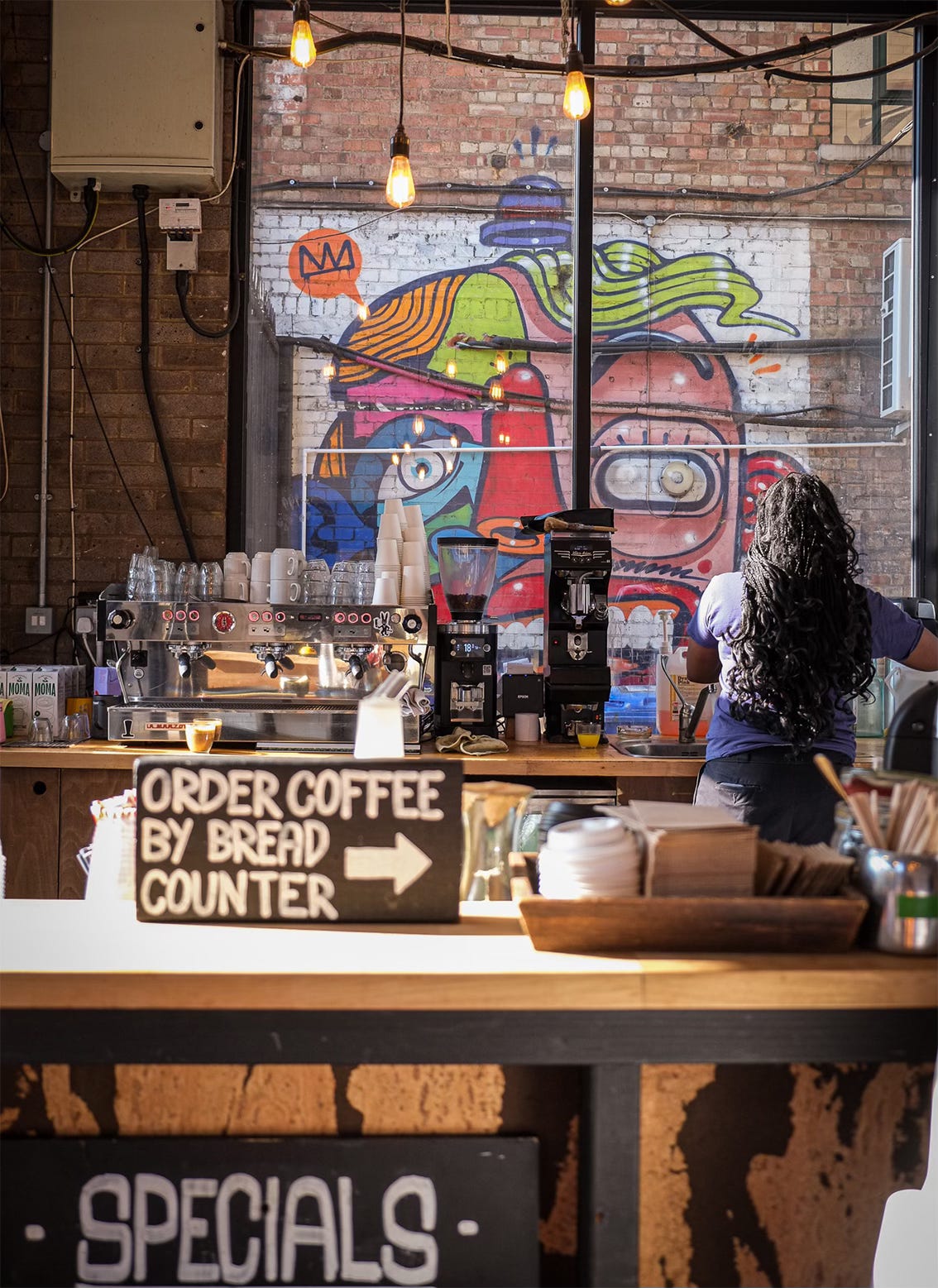
Dalston Curve Garden
The Dalston Curve Garden and café is just around the corner from The Dusty Knuckle, off a busy main road and junction. But don’t be misled by the urban surroundings and constant London traffic. Dalston Curve is the perfect place if you’re looking for a calm green space with outdoor café. The garden is planted and maintained by a dedicated social enterprise programme and includes wildlife-friendly trees and shrubs, raised beds for growing herbs and vegetables and seasonal flowers.
Originally a train terminus the garden was built in 2010 on the abandoned Eastern Curve railway line, which had been out of service since the 1950s. There’s now plenty of mature planting and filtered sunlight through birch, hazel and hawthorn trees and butterfly and bee-attracting plants. Sit by the café, under the wooden pavilion or at a table in the garden and enjoy coffee, lunch or evening drinks in blissful surroundings. Open seven days a week, all year round, opposite Dalston Junction station. Visit their website for spring and summer opening times.
Oscar Bar on Charlotte St.
This central London bar, spilling out from the buzzy Charlotte Street Hotel, adds a touch of Paris-style café culture to Fitzrovia. Every Friday evening, enjoy live music from local DJs while sipping cocktails or a chilled glass of wine. We enjoyed summery mocktails on a quiet weekday afternoon but the afternoon tea looked well worth going back for. Book online. Oscar Bar 15-17 Charlotte Street, London, W1T 1RJ.
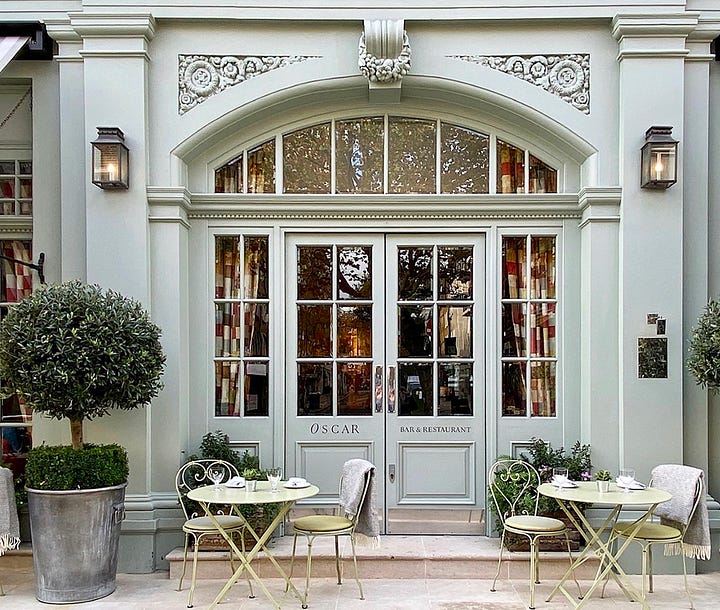
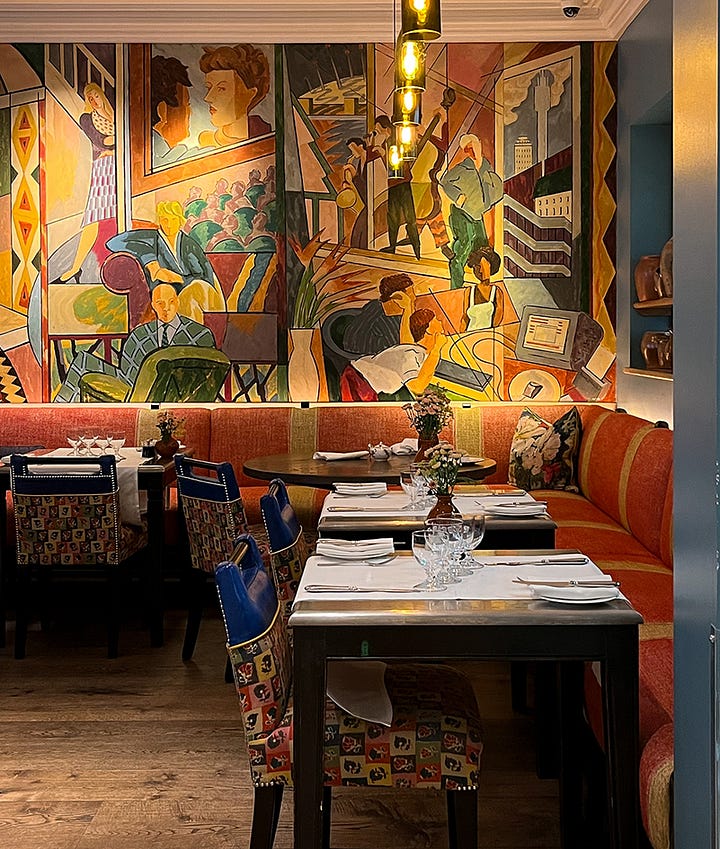
Thanks so much for reading, it’s always great to see you here and your support means a lot to me. If you’ve enjoyed this post please like by clicking on the little ♥️ or restack symbol, as it helps to circulate it to a wider audience. Lots of love,


